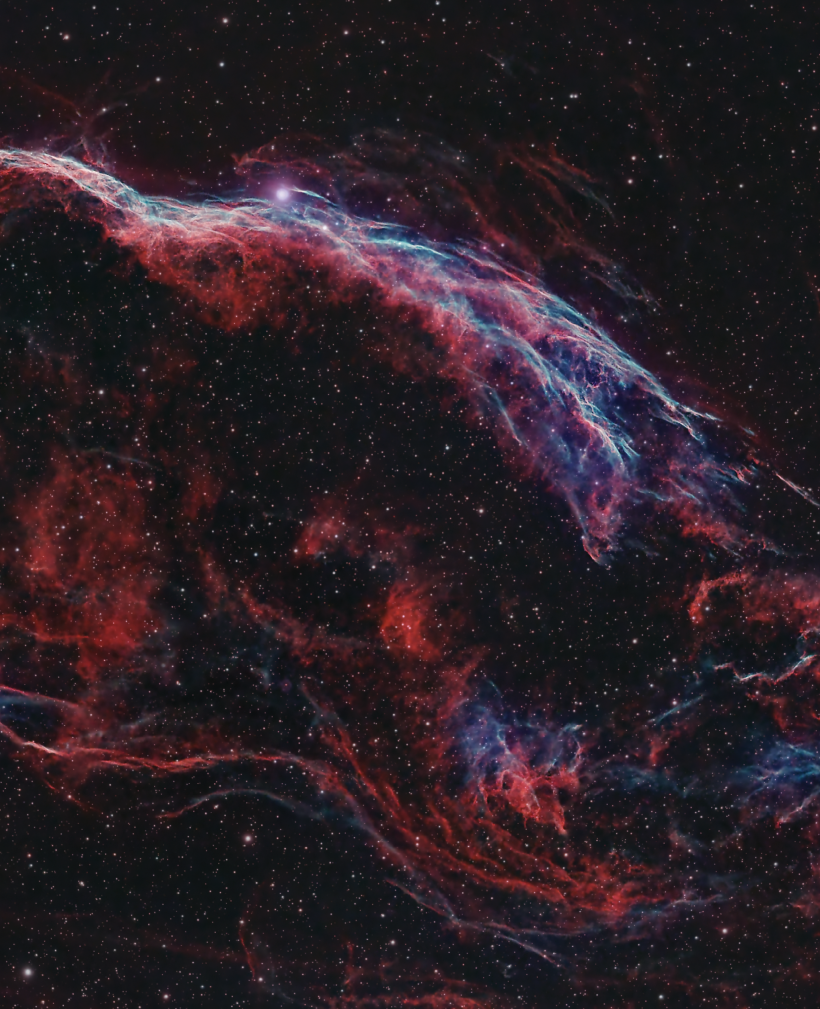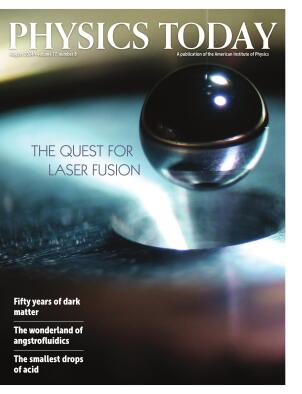Western Veil Nebula
DOI: 10.1063/pt.fwda.xpth
At this time of year in the Northern Hemisphere, the Cygnus constellation, with its recognizable Northern Cross, is visible in the night sky. What’s less visible is the Veil Nebula, a cloud of hot dust and ionized gas that’s part of a large supernova remnant. The nebula formed about 10 000–20 000 years ago from the explosion of a massive star. Despite being roughly 2400 light-years away, the Veil has an angular size in the sky that’s several times larger than the Moon. But even in ideal conditions, stargazers need a telescope to see it. And with increasing light pollution, astrophotographers are having a more difficult time capturing images of it.

This picture shows the western part of the Veil Nebula. Imran Sultan—a physics graduate student at Northwestern University—made the image, which was the 2023 astronomy winner of the Royal Society’s annual photography competition. To construct the image, Sultan observed the sky over the Chicago suburbs for two nights and combined 52 exposures that each lasted for five minutes. “I was able to overcome the extreme light pollution,” he says in the Royal Society’s press release, “by using a special filter which only allows certain wavelengths of light to pass through.” The emission that did get through comes from the bountiful hydrogen and oxygen gases in the Veil Nebula; they appear in the image as red and blue, respectively. (Image courtesy of Imran Sultan.)
More about the Authors
Alex Lopatka. alopatka@aip.org

